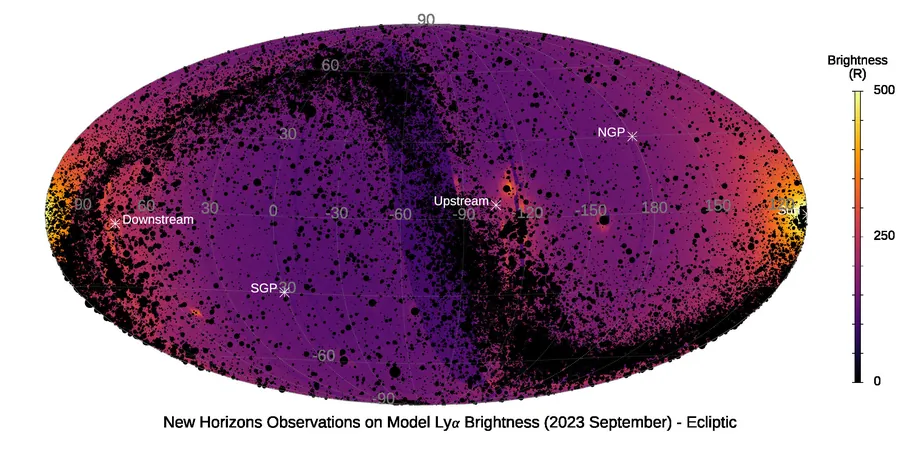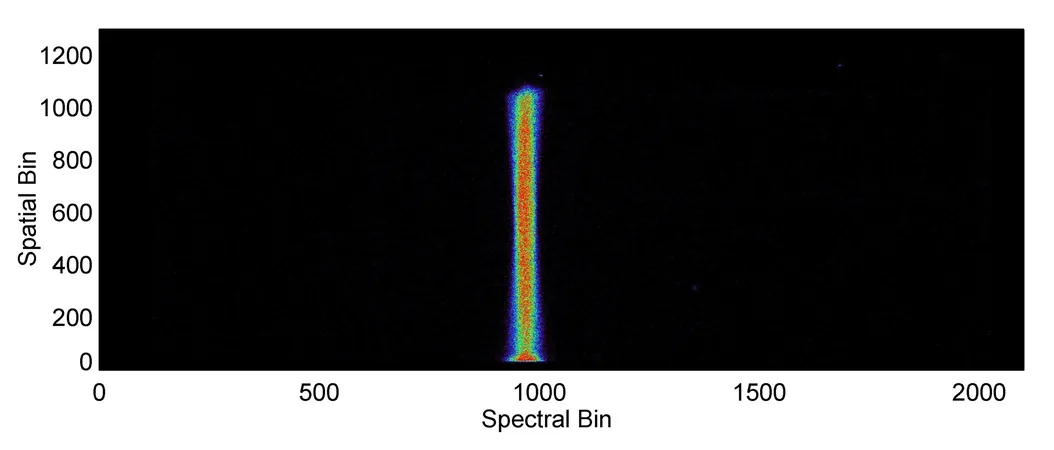
Breaking New Ground: New Horizons Unveils the Galaxy's First Lyman-Alpha Map!
2025-04-28
Author: Emma
In a groundbreaking achievement, NASA's New Horizons spacecraft has delivered the galaxy's very first map of Lyman-alpha emissions, a significant ultraviolet wavelength that reveals a fresh perspective on the cosmic neighborhood surrounding our Solar System. This remarkable feat is detailed in a new study led by the Southwest Research Institute (SwRI) team.
The research paper, titled "The Lyman-alpha Sky as Observed by New Horizons at 57 AU," authored by R.G. Gladstone and colleagues, has been published in The Astronomical Journal. "Understanding the Lyman-alpha background gives us invaluable insight into the nearby galactic structures and their processes," stated Dr. Randy Gladstone, the lead investigator and first author.
Lyman-alpha, a unique wavelength of ultraviolet light emitted by hydrogen atoms, plays a vital role for astronomers exploring the composition, temperature, and motion of distant stars and galaxies. By harnessing this data, researchers can decode the mysteries of cosmic bodies across vast distances.
During its initial mission to Pluto, New Horizons began gathering essential data about Lyman-alpha emissions utilizing the Alice spectrograph, developed by SwRI. This advanced instrument specializes in the far-ultraviolet wavelength spectrum, allowing astronomers to split light into its constituent colors.
After completing its primary mission at Pluto, New Horizons expanded its scope, conducting broader and more frequent surveys of Lyman-alpha emissions as it ventured further from the sun. Notably, scans in 2023 encompassed about 83% of the sky.
To focus on emissions originating from the galaxy, the New Horizons team meticulously modeled and subtracted solar Lyman-alpha emissions from their data. The analysis revealed an unexpectedly intense background brightness—about ten times stronger than prior estimates.
Dr. Gladstone remarked, "The findings suggest that our solar system is nestled within a hot bubble of gas, characterized by regions with enhanced hydrogen gas emissions at the Lyman-alpha wavelength, potentially formed by supernova events millions of years ago."
Interestingly, the study found no substantive evidence for the "hydrogen wall" hypothesis, which theorized that a barrier of interstellar hydrogen accumulates at the edge of our heliosphere—the solar wind's vast reach into space. The New Horizons data did not support the idea that this wall is a significant source of Lyman-alpha emissions.
Co-author and New Horizons Principal Investigator, Dr. Alan Stern, hailed these observations as a major milestone, stating, "This is the first clear view of the sky around our solar system at these wavelengths. It not only unveils new characteristics of our celestial surroundings but also challenges older theories that have been unsubstantiated by New Horizons data. This Lyman-alpha map lays a robust foundation for future discoveries!"









 Brasil (PT)
Brasil (PT)
 Canada (EN)
Canada (EN)
 Chile (ES)
Chile (ES)
 Česko (CS)
Česko (CS)
 대한민국 (KO)
대한민국 (KO)
 España (ES)
España (ES)
 France (FR)
France (FR)
 Hong Kong (EN)
Hong Kong (EN)
 Italia (IT)
Italia (IT)
 日本 (JA)
日本 (JA)
 Magyarország (HU)
Magyarország (HU)
 Norge (NO)
Norge (NO)
 Polska (PL)
Polska (PL)
 Schweiz (DE)
Schweiz (DE)
 Singapore (EN)
Singapore (EN)
 Sverige (SV)
Sverige (SV)
 Suomi (FI)
Suomi (FI)
 Türkiye (TR)
Türkiye (TR)
 الإمارات العربية المتحدة (AR)
الإمارات العربية المتحدة (AR)